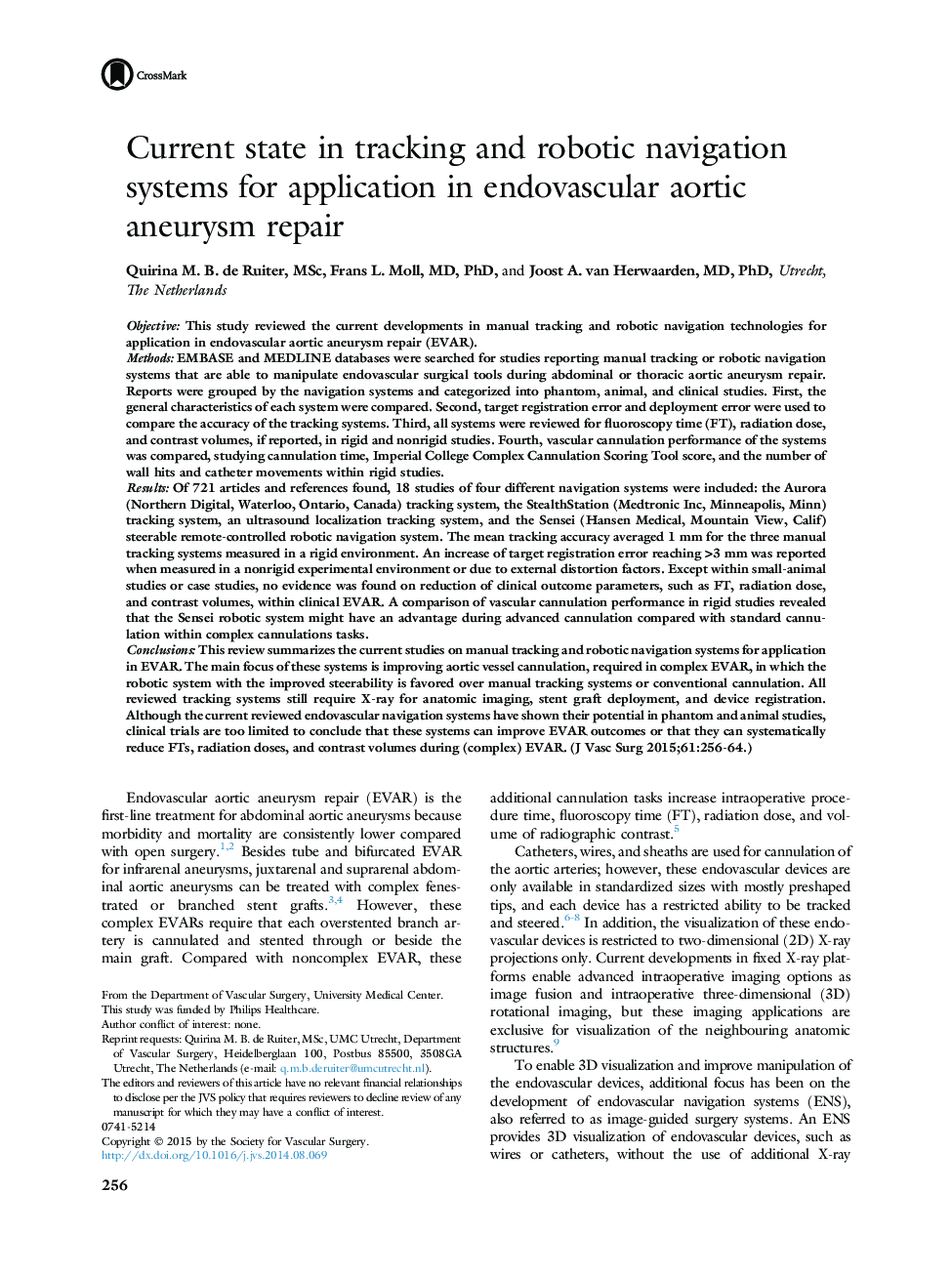| کد مقاله | کد نشریه | سال انتشار | مقاله انگلیسی | نسخه تمام متن |
|---|---|---|---|---|
| 2988129 | 1179813 | 2015 | 9 صفحه PDF | دانلود رایگان |
ObjectiveThis study reviewed the current developments in manual tracking and robotic navigation technologies for application in endovascular aortic aneurysm repair (EVAR).MethodsEMBASE and MEDLINE databases were searched for studies reporting manual tracking or robotic navigation systems that are able to manipulate endovascular surgical tools during abdominal or thoracic aortic aneurysm repair. Reports were grouped by the navigation systems and categorized into phantom, animal, and clinical studies. First, the general characteristics of each system were compared. Second, target registration error and deployment error were used to compare the accuracy of the tracking systems. Third, all systems were reviewed for fluoroscopy time (FT), radiation dose, and contrast volumes, if reported, in rigid and nonrigid studies. Fourth, vascular cannulation performance of the systems was compared, studying cannulation time, Imperial College Complex Cannulation Scoring Tool score, and the number of wall hits and catheter movements within rigid studies.ResultsOf 721 articles and references found, 18 studies of four different navigation systems were included: the Aurora (Northern Digital, Waterloo, Ontario, Canada) tracking system, the StealthStation (Medtronic Inc, Minneapolis, Minn) tracking system, an ultrasound localization tracking system, and the Sensei (Hansen Medical, Mountain View, Calif) steerable remote-controlled robotic navigation system. The mean tracking accuracy averaged 1 mm for the three manual tracking systems measured in a rigid environment. An increase of target registration error reaching >3 mm was reported when measured in a nonrigid experimental environment or due to external distortion factors. Except within small-animal studies or case studies, no evidence was found on reduction of clinical outcome parameters, such as FT, radiation dose, and contrast volumes, within clinical EVAR. A comparison of vascular cannulation performance in rigid studies revealed that the Sensei robotic system might have an advantage during advanced cannulation compared with standard cannulation within complex cannulations tasks.ConclusionsThis review summarizes the current studies on manual tracking and robotic navigation systems for application in EVAR. The main focus of these systems is improving aortic vessel cannulation, required in complex EVAR, in which the robotic system with the improved steerability is favored over manual tracking systems or conventional cannulation. All reviewed tracking systems still require X-ray for anatomic imaging, stent graft deployment, and device registration. Although the current reviewed endovascular navigation systems have shown their potential in phantom and animal studies, clinical trials are too limited to conclude that these systems can improve EVAR outcomes or that they can systematically reduce FTs, radiation doses, and contrast volumes during (complex) EVAR.
Journal: Journal of Vascular Surgery - Volume 61, Issue 1, January 2015, Pages 256–264
